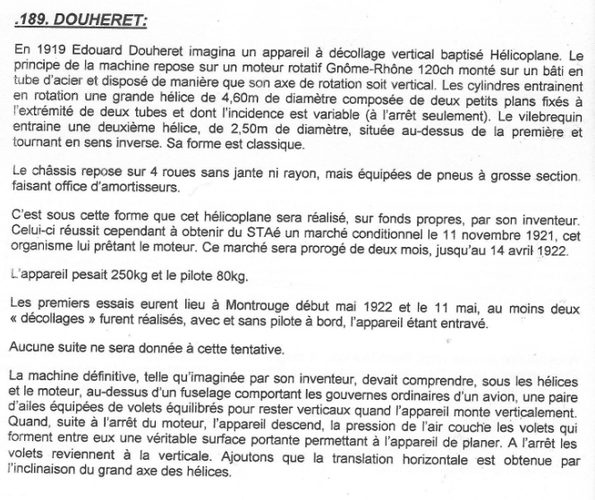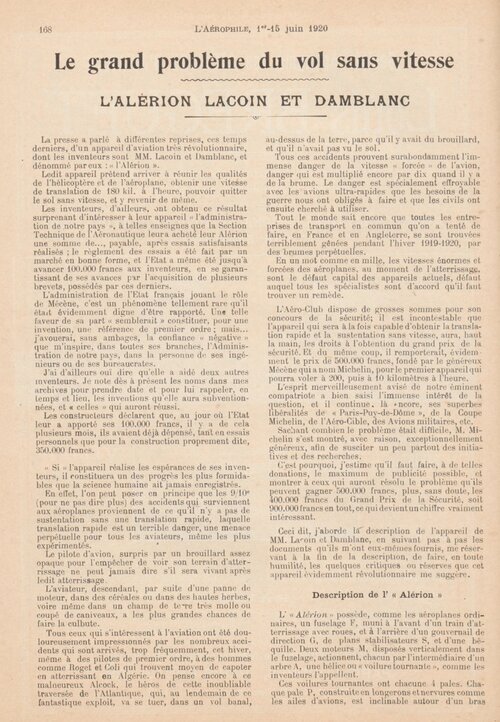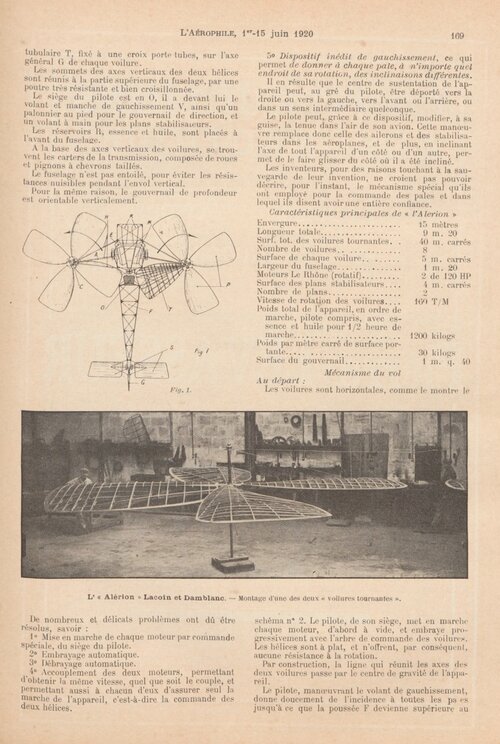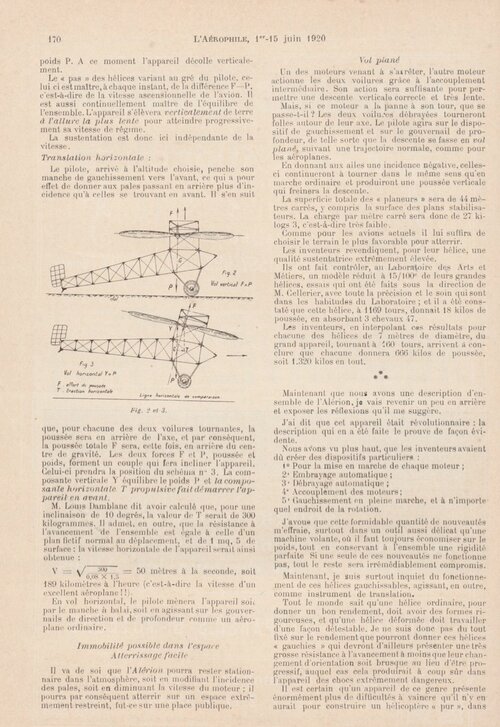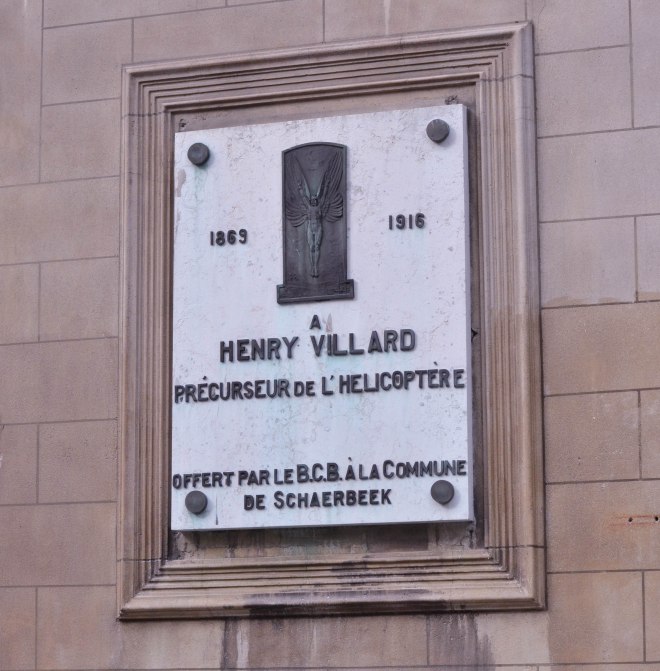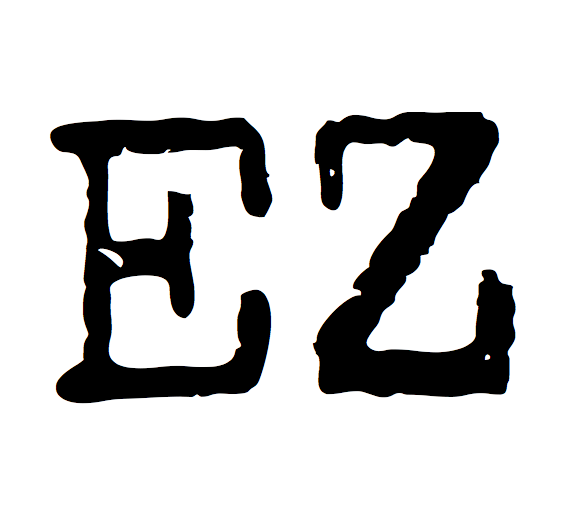- Joined
- 26 May 2006
- Messages
- 34,925
- Reaction score
- 15,796
From TU 194,
DOUHERET:
In 1919 Edouard Douheret imagined a vertical takeoff device called Hélicoplane. The principle of the machine is based on a Gnôme-Rhône 1
20 hp rotary engine mounted on a frame in steel tube and arranged so
that its axis of rotation is vertical. The cylinders drive rotating a large propeller 4.80m in diameter made up of two small planes fixed to
the end of two tubes and whose incidence is variable (when stationary
only). The crankshaft drives a second propeller, 2.50m in diameter,
located above the first and turning in the opposite direction. Its shape
is classic.
The chassis is based on 4 wheels without rims or spokes, but equipped
with large section tires acting as shock absorbers.
It is in this form that this helicopter will be produced, with own funds,
by its inventor.However, the latter succeeded in obtaining a conditional contract from STAé on 11 November 1921, this body claiming the engine. This contract will be extended for two months, until April 14, 1922.
The aircraft weighed 250kg and the pilot 80kg.
The first tests took place in Montrouge at the beginning of May 1922
and on May 11, at least two "Peeling" were carried out, with and without
a pilot on board, the aircraft being hampered.
No follow-up will be given to this attempt.
The final machine, as imagined by its inventor, was to include, under the propellers
and the engine, above a fuselage comprising the ordinary control surfaces of an airplane, a pair
wings equipped with balanced flaps to remain vertical when the aircraft climbs vertically.
When, after stopping the engine, the aircraft descends, the air pressure sets the flaps which
form between them a real bearing surface allowing the device to hover. At a standstill
shutters return vertically. Let us add that the horizontal translation is obtained by
the inclination of the major axis of the propellers.
DOUHERET:
In 1919 Edouard Douheret imagined a vertical takeoff device called Hélicoplane. The principle of the machine is based on a Gnôme-Rhône 1
20 hp rotary engine mounted on a frame in steel tube and arranged so
that its axis of rotation is vertical. The cylinders drive rotating a large propeller 4.80m in diameter made up of two small planes fixed to
the end of two tubes and whose incidence is variable (when stationary
only). The crankshaft drives a second propeller, 2.50m in diameter,
located above the first and turning in the opposite direction. Its shape
is classic.
The chassis is based on 4 wheels without rims or spokes, but equipped
with large section tires acting as shock absorbers.
It is in this form that this helicopter will be produced, with own funds,
by its inventor.However, the latter succeeded in obtaining a conditional contract from STAé on 11 November 1921, this body claiming the engine. This contract will be extended for two months, until April 14, 1922.
The aircraft weighed 250kg and the pilot 80kg.
The first tests took place in Montrouge at the beginning of May 1922
and on May 11, at least two "Peeling" were carried out, with and without
a pilot on board, the aircraft being hampered.
No follow-up will be given to this attempt.
The final machine, as imagined by its inventor, was to include, under the propellers
and the engine, above a fuselage comprising the ordinary control surfaces of an airplane, a pair
wings equipped with balanced flaps to remain vertical when the aircraft climbs vertically.
When, after stopping the engine, the aircraft descends, the air pressure sets the flaps which
form between them a real bearing surface allowing the device to hover. At a standstill
shutters return vertically. Let us add that the horizontal translation is obtained by
the inclination of the major axis of the propellers.
Attachments
Last edited:

